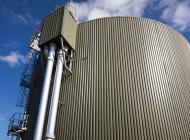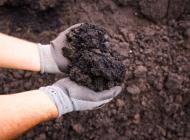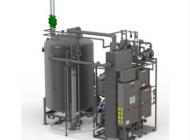Biowaste Solutions
Break down organic matter and create biogas for fuel and fertilizer
Veolia biowaste solutions break down organic matter and create biogas. The biogas can be upgraded for pipeline injection and additional nutrient-rich digestate can be used as fertilizer. The process includes separation, pasteurization, digestion, biogas management and digestate processing which helps you manage your biowaste plant from reception to renewable energy.
Why Does Veolia Provide Biowaste Solutions?
Biowaste or food waste is increasingly regarded as a resource instead of a waste requiring disposal. Organic material contained within leftover food waste collected from homes, from food manufacturers and restaurants represents a significant sustainable energy source. Rather than disposing of organic food waste to landfill, Veolia’s biowaste solutions can be used to recover biogas while producing nutrient rich fertilizer cake.
- Separation
-
Mechanical separation to produce high quality slurry
Biowaste separation provides an integrated, multi-step process that provides enhanced organics capture, effective removal of contaminants and grit, producing a clean easily digestable slurry. Veolia’s Re:Sep biowaste separation system maximizes organics capture and produces a clean high quality slurry. It can handle contamination levels up to 30%, and captures over 95% of the organic material.
Download biowaste separations fact sheet (PDF)
High efficiency separation of contamination and grit improves digester performance and results in:
- Digestion
-
High efficiency digestion
Veolia’s digestion enhancement delivers higher conversion of volatile organic matter, with over 80% COD converted to biogas while providing shorter retention times and increased capacity within the digester for additional sludge or organic waste digestion.
Veolia’s advanced anaerobic digestion technologies use bacteria in the absence of oxygen to break down matter to create biogas. Veolia’s digestion enhancement delivers higher conversion of volatile organic matter, with over 80% COD converted to biogas while providing shorter retention times and increased capacity within the digester for additional sludge or organic waste digestion.
2PAD anaerobic digestion benefits
Produces class A biosolids, which are bio-safe and can be land-applied without restrictions Separating the acid- and methane-forming phases makes the digestion process more efficient and more effective Aeration is not required, so energy costs are lowMechanical separation to produce high quality slurry Tab 1 Body Copy: Biowaste separation provides an integrated, multi-step process that provides enhanced organics capture, effective removal of contaminants and grit, producing a clean easily digestable slurry. Veolia’s Re:Sep biowaste separation system maximizes organics capture and produces a clean high quality slurry. It can handle contamination levels up to 30%, and captures over 95% of the organic material.
Download 2PAD anaerobic digestion brochure (PDF)
- Total hydraulic retention time is greatly reduced, which means smaller digesters can be used and associated costs are lower
- Foaming is virtually eliminated because nocardia bacteria, the typical cause of digester foaming, is destroyed in the thermophilic stage
- Pasteurization
-
Enhance digester efficiency with Veolia’s hydrolysis pasteurization digestion process
Veolia’s hydrolysis pasteurization digestion (HPD) process enhances anaerobic digestion with over 80% conversion of COD to biogas and production of a nutrient rich, high quality digestate. The HPD process combines all of the stages of an effective digestion process into an integrated approach that can be tailored based on plant capacity to help maximize the conversion of these wastes into value products, namely renewable energy and fertilizer.
- Biogas Management
-
Store and upgrade raw biogas to methane grid quality
Veolia provides solutions for biogas management with the TECON* Double Membrane Gasholder and the MemGas* gas upgrading system.
Veolia’s biogas management system, MemGas, upgrades raw biogas to renewable natural gas for pipeline injection with more than 99% methane recovery. This provides a reliable revenue source.
Biogas Management Features
TECON Custom-Made Biogas Storage for Wastewater Treatment Plants and Energy Recovery Facilities— The TECON gasholder may be mounted on the ground typically in the form of a ¾ sphere, or mounted on the top of an anaerobic digester or tank functioning as a durable tank cover and storage vessel. MemGas Membrane System performs a three step process to upgrade raw biogas to gas suitable to inject in the pipeline. The unit guarantees a purification yield of more than 99.5 % over a wide operating range. The compliant biomethane is then directed to the injection station.
- Digestate
-
Producing digestate for fertilizer
Veolia’s digestate management provides fertilizer grade product from biowaste digestion. After Veolia’s advanced digestion, the slurry can be treated further via dewatering to produce a valuable cake byproduct. The Veolia’s digestion enhancement process maintains valuable nutrients to sell digestate as fertilizer.






